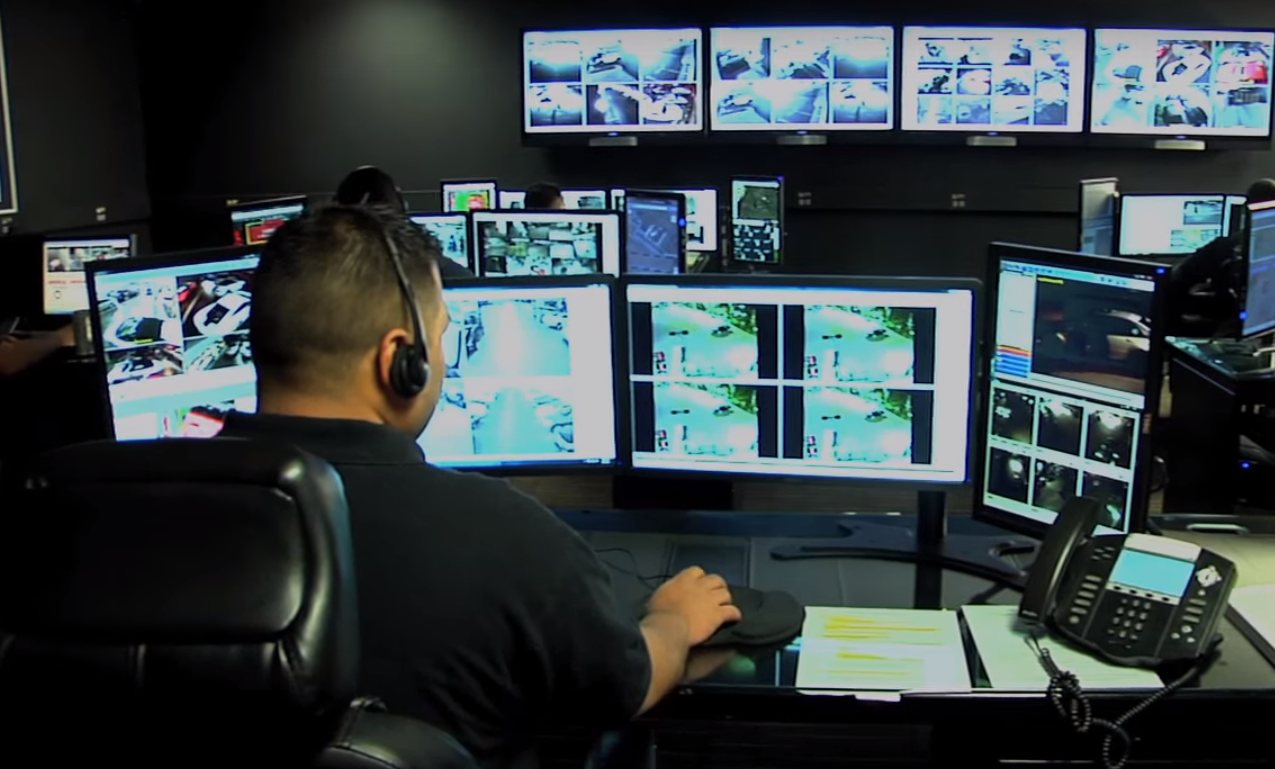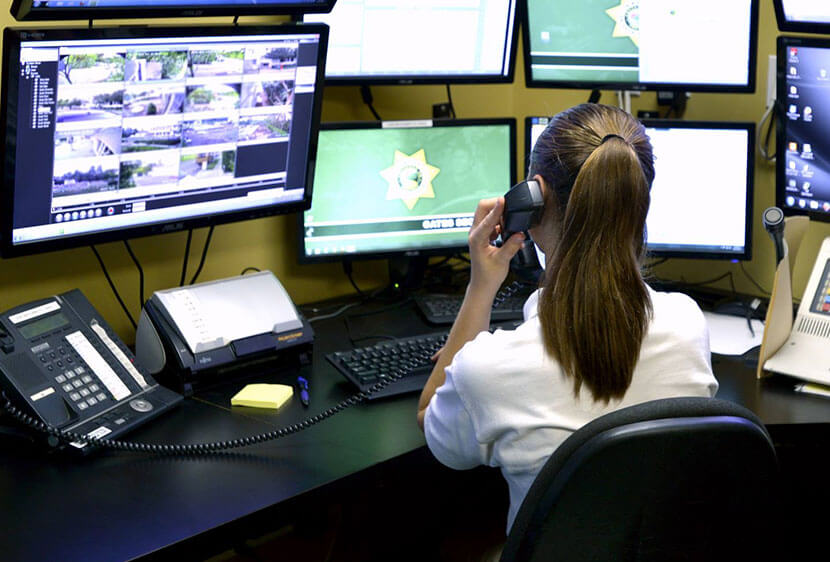ARTICLES
- HOME
- -
- ARTICLES
The Art of Surveillance: Expert Strategies for Monitoring and Protecting with Precision

The realm of surveillance has evolved significantly over the years, transcending its traditional connotations and emerging as a critical tool for safeguarding individuals, businesses, and communities. In today's dynamic landscape, where threats can manifest in myriad forms, the art of surveillance has become an indispensable practice, empowering us to monitor and protect with unparalleled precision.
As professionals in this field, we understand the delicate balance between ensuring safety and respecting privacy. Surveillance is not merely a means of observation; it is a strategic endeavor that demands meticulous planning, cutting-edge technology, and a deep understanding of the intricacies involved.
In this comprehensive guide, we will delve into the intricate world of surveillance, exploring its various facets, techniques, and expert strategies. Whether you are a security professional, a business owner, or an individual seeking to safeguard your interests, this article will equip you with the knowledge and insights necessary to navigate the complexities of this ever-evolving domain.
Types of surveillance techniques:
Surveillance encompasses a diverse array of techniques, each tailored to specific objectives and circumstances. From covert operations to overt monitoring, the methods employed can vary significantly. Here are some of the most prevalent surveillance techniques:
-
Physical Surveillance: This traditional approach involves the physical presence of trained personnel to observe and gather information in real-time. It can be conducted on foot, in vehicles, or through stationary observation points.
-
Electronic Surveillance: Leveraging cutting-edge technology, electronic surveillance encompasses a wide range of methods, including video monitoring, audio recording, and data interception. This technique allows for remote monitoring and data collection without the need for physical presence.
-
Cyber Surveillance: In the digital age, cyber surveillance has emerged as a crucial aspect of monitoring online activities, network traffic, and data breaches. This technique employs sophisticated tools and techniques to detect and mitigate cyber threats.
-
Aerial Surveillance: Utilizing drones, aircraft, or satellites, aerial surveillance provides a bird's-eye view of a target area, enabling comprehensive coverage and enhanced situational awareness.
-
Undercover Operations: In certain situations, undercover agents may be deployed to infiltrate and gather intelligence from within a target organization or group, providing invaluable insights and information.
Each of these techniques has its unique strengths and limitations, and the choice of approach is contingent upon the specific objectives, resources, and legal constraints of the operation.
Surveillance equipment and tools:
The effectiveness of surveillance operations heavily relies on the quality and capabilities of the equipment and tools employed. In this section, we will explore some of the essential tools that professionals in this field leverage:
-
Cameras and Optics: High-resolution cameras, night vision devices, and advanced optics are critical for capturing detailed visual information, whether during physical surveillance or remote monitoring.
-
Audio Recording Devices: From discreet microphones to directional audio recorders, these tools enable the capture of audio signals, facilitating comprehensive intelligence gathering.
-
Tracking and Monitoring Devices: GPS trackers, radio frequency identification (RFID) tags, and cellular network tracking tools allow for the precise monitoring of targets' movements and locations.
-
Data Interception and Analysis Tools: Specialized software and hardware solutions are employed to intercept and analyze digital data, including network traffic, emails, and encrypted communications.
-
Drones and Aerial Platforms: Unmanned aerial vehicles (UAVs) and other aerial platforms equipped with cameras, sensors, and communication systems provide invaluable aerial surveillance capabilities.
-
Disguise and Concealment Equipment: Effective surveillance often requires the use of specialized disguises, camouflage, and concealment techniques to ensure the covert nature of operations.
Proper training and adherence to legal and ethical guidelines are paramount when utilizing these tools to ensure their responsible and lawful deployment.
Expert strategies for effective surveillance:
Successful surveillance operations demand a strategic approach that combines meticulous planning, skilled execution, and continuous adaptation. Here are some expert strategies that can elevate the effectiveness of your surveillance efforts:
-
Comprehensive Planning and Risk Assessment: Thorough planning is the cornerstone of any successful surveillance operation. Conduct detailed risk assessments, identify potential challenges, and develop contingency plans to mitigate unforeseen circumstances.
-
Target Profiling and Intelligence Gathering: Gather as much intelligence as possible about your target, including their habits, routines, associates, and potential vulnerabilities. This information will inform your surveillance strategies and enhance your chances of success.
-
Team Coordination and Communication: Effective surveillance often requires a coordinated team effort. Establish clear lines of communication, roles, and responsibilities to ensure seamless collaboration and timely information sharing.
-
Adaptability and Situational Awareness: The ability to adapt to changing circumstances and maintain situational awareness is crucial in surveillance operations. Stay vigilant, anticipate potential obstacles, and be prepared to adjust your tactics accordingly.
-
Concealment and Covert Operations: Mastering the art of concealment and covert operations can be invaluable in maintaining operational secrecy and minimizing the risk of detection. Employ disguises, camouflage, and other concealment techniques as appropriate.
-
Legal and Ethical Compliance: Ensure that your surveillance activities adhere to all applicable laws, regulations, and ethical guidelines. Respect privacy rights and maintain the highest standards of professional conduct.
By implementing these expert strategies, you can enhance the effectiveness of your surveillance operations, mitigate risks, and achieve your objectives with precision and professionalism.
Monitoring and protecting with precision:
In the realm of surveillance, precision is paramount. Whether you are monitoring a specific target, protecting valuable assets, or safeguarding a community, the ability to gather accurate and actionable intelligence is crucial. Here are some strategies for monitoring and protecting with precision:
-
Leveraging Advanced Technology: Embrace cutting-edge technologies such as high-resolution cameras, thermal imaging, and advanced analytics tools to capture detailed information and derive actionable insights.
-
Integrating Multiple Data Sources: Combine data from various sources, including visual surveillance, audio recordings, digital communications, and open-source intelligence, to create a comprehensive picture of the situation.
-
Continuous Monitoring and Analysis: Implement robust monitoring systems that enable real-time tracking and analysis of relevant data streams. Establish protocols for timely response and intervention when potential threats are detected.
-
Employing Predictive Analytics: Leverage predictive analytics and pattern recognition techniques to anticipate potential risks, identify emerging threats, and proactively implement protective measures.
-
Collaboration and Information Sharing: Foster collaboration and information sharing among relevant stakeholders, such as law enforcement agencies, private security firms, and community organizations, to enhance situational awareness and coordinated response efforts.
-
Periodic Evaluation and Optimization: Regularly evaluate the effectiveness of your monitoring and protection strategies, identify areas for improvement, and implement optimizations to enhance precision and efficiency.
By embracing these strategies, you can achieve a heightened level of precision in your monitoring and protection efforts, ensuring the safety and security of your targets, assets, or communities.
Surveillance in different industries:
Surveillance plays a crucial role across various industries, each with its unique requirements and challenges. Here are some examples of how surveillance is employed in different sectors:
-
Corporate and Business Security: Companies leverage surveillance techniques to protect their physical assets, safeguard intellectual property, and monitor employee activities to maintain a secure and productive work environment.
-
Law Enforcement and Investigations: Law enforcement agencies rely on surveillance methods to gather intelligence, track suspects, and collect evidence in criminal investigations, ensuring public safety and upholding the rule of law.
-
Retail and Loss Prevention: Retailers employ surveillance systems to monitor customer behavior, prevent theft, and identify potential security breaches, safeguarding their merchandise and ensuring a secure shopping environment.
-
Transportation and Logistics: Surveillance techniques are utilized in transportation and logistics to monitor cargo movements, track vehicles, and ensure the secure delivery of goods, minimizing the risk of theft or disruptions.
-
Critical Infrastructure Protection: Surveillance plays a vital role in protecting critical infrastructure such as power plants, water treatment facilities, and telecommunication networks, ensuring the continuity of essential services and mitigating potential threats.
-
Event Security: Large-scale events, such as concerts, sporting events, and political gatherings, often employ comprehensive surveillance measures to ensure the safety of attendees and maintain order.
Regardless of the industry, the implementation of surveillance strategies requires a thorough understanding of the specific requirements, legal and regulatory frameworks, and ethical considerations unique to each sector.
Surveillance challenges and solutions:
While surveillance offers invaluable benefits in terms of monitoring and protection, it also presents a range of challenges that must be addressed. Here are some common challenges and potential solutions:
-
Privacy Concerns: Striking the right balance between surveillance and privacy rights is a delicate endeavor. Implement robust data protection protocols, adhere to legal and ethical guidelines, and ensure transparency in your surveillance practices.
-
Data Overload: The sheer volume of data generated by surveillance systems can be overwhelming. Employ advanced analytics tools, data management strategies, and automated processes to effectively process and analyze the information.
-
Technology Limitations: No technology is perfect, and surveillance systems can be subject to limitations or vulnerabilities. Stay up-to-date with the latest technological advancements, conduct regular system audits, and implement robust cybersecurity measures.
-
Resource Constraints: Effective surveillance operations can be resource-intensive, requiring skilled personnel, specialized equipment, and substantial financial investments. Optimize resource allocation, explore cost-effective solutions, and prioritize critical areas of focus.
-
Legal and Regulatory Compliance: Navigating the complex web of laws and regulations governing surveillance can be challenging. Stay informed about the latest legal developments, consult with legal experts, and ensure strict compliance with all applicable laws and regulations.
-
Public Perception and Trust: Surveillance activities can sometimes face public scrutiny and concerns about potential misuse or overreach. Maintain transparency, engage in public education efforts, and foster trust by demonstrating the responsible and ethical use of surveillance techniques.
By proactively addressing these challenges and implementing appropriate solutions, you can mitigate risks, enhance the effectiveness of your surveillance operations, and maintain the trust and confidence of stakeholders.
Conclusion:
The art of surveillance has evolved into a multifaceted discipline, encompassing a wide range of techniques, technologies, and strategies. As professionals in this field, we bear the responsibility of leveraging these tools and methodologies with precision, ensuring the safety and security of individuals, businesses, and communities while upholding the highest ethical standards.
Throughout this comprehensive guide, we have explored the intricacies of surveillance, from its various techniques and equipment to expert strategies for effective monitoring and protection. We have delved into industry-specific applications and addressed the challenges that arise in this complex domain.
Remember, the art of surveillance is not merely about observation; it is a strategic endeavor that demands meticulous planning, skilled execution, and a deep commitment to upholding the principles of legality, ethics, and respect for privacy. Embrace these principles, and you will be well-equipped to navigate the complexities of this field, ensuring the safety and security of all.
Unlock the full potential of your surveillance operations with our comprehensive suite of expert services. From cutting-edge technology solutions to specialized training and consulting, we empower you to monitor and protect with unparalleled precision. Contact us today to elevate your surveillance capabilities and safeguard what matters most.



